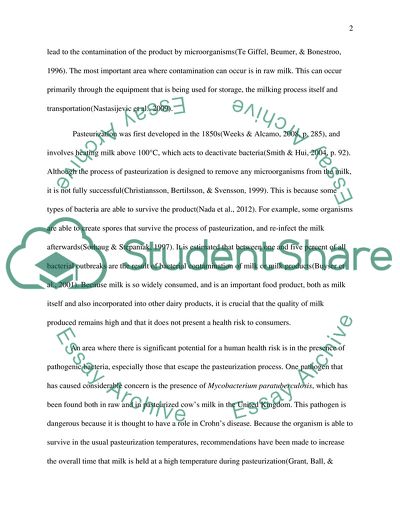Cite this document
(Food Safety Measures for Milk Assignment Example | Topics and Well Written Essays - 3000 words, n.d.)
Food Safety Measures for Milk Assignment Example | Topics and Well Written Essays - 3000 words. Retrieved from https://studentshare.org/social-science/1776423-implication-of-food-safety-measures-on-microbiological-quality-of-raw-and-pasteurized-milk
Food Safety Measures for Milk Assignment Example | Topics and Well Written Essays - 3000 words. Retrieved from https://studentshare.org/social-science/1776423-implication-of-food-safety-measures-on-microbiological-quality-of-raw-and-pasteurized-milk
(Food Safety Measures for Milk Assignment Example | Topics and Well Written Essays - 3000 Words)
Food Safety Measures for Milk Assignment Example | Topics and Well Written Essays - 3000 Words. https://studentshare.org/social-science/1776423-implication-of-food-safety-measures-on-microbiological-quality-of-raw-and-pasteurized-milk.
Food Safety Measures for Milk Assignment Example | Topics and Well Written Essays - 3000 Words. https://studentshare.org/social-science/1776423-implication-of-food-safety-measures-on-microbiological-quality-of-raw-and-pasteurized-milk.
“Food Safety Measures for Milk Assignment Example | Topics and Well Written Essays - 3000 Words”, n.d. https://studentshare.org/social-science/1776423-implication-of-food-safety-measures-on-microbiological-quality-of-raw-and-pasteurized-milk.


